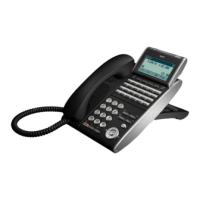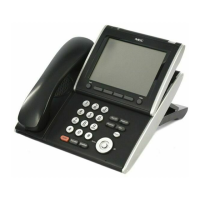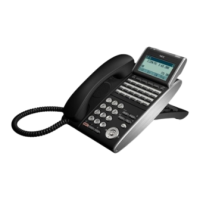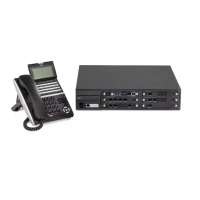Ring Groups
Description
Ring Groups determine how trunks ring extensions. Generally, trunks ring extensions only if Ring
Group programming allows. For example, to make a trunk ring an extension:
• Assign the trunk and the extension to the same Ring Group.
• In the extension Ring Group programming, assign ringing for the trunk.
Any number of extensions and trunks can be in a specific group. The system allows:
• Ring Groups = 1~25
• In-Skin Voice Mail = 102
If an extension has a line key for the trunk, Ring Group calls ring the line key. If the extension does not
have a line key, the trunk rings the line appearance key. If an extension has a key for a trunk that is
not in its ring group, the trunk follows Access Map programming.
Conditions
• DIL trunks disregard ring group programming until DIL overflow.
Default Settings
All trunks are in Ring Group 1. Extensions 200 ring for trunk calls and all other extensions only flash.
System Availability
Terminals
All Multiline Terminals and Single Line Terminals
Required Component(s)
None
Related Features
Automatic Route Selection (ARS/F-Route)
Direct Inward Line (DIL)
Direct Inward Dialing (DID)
Direct Inward System Access (DISA)
ISDN Compatibility
Night Service
Programmable Function Keys
SL1000/SL1100
ISSUE 2.0
1-590
Ring Groups
R

